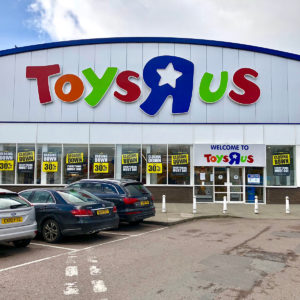No American tragedy is complete without some good old-fashioned pitchfork waving. Exhibit A: the gnashing of teeth and rending of garments among the media and professional activist crowd over the downfall of Toys “R” Us.
Obviously, the situation is tragic, especially for the company’s hardworking employees. But the oh-so-predictable cries of “It’s all Wall Street’s fault!” ring hollow with even a cursory review of the facts.
Geoffrey the Giraffe wasn’t killed by the private equity firms that spent years trying to save Toys “R” Us. He was slowly strangled to death by a regulatory environment that is toxic for brick-and-mortar retailers and a ruthless horde of Amazonian online competitors eager to bend the rules in their favor.
Toys “R” Us has shuttered its stores for good, and while many of us are still processing our grief over the loss, e-commerce giant Amazon wasted no time in leveraging the market vacancy that it had a heavy role in creating. Not even a week after the store closings, news broke that Amazon was planning to capitalize on the demise of the beloved toy store by taking a page from its playbook and mailing millions of people a holiday toy catalog.
The 21st century has not been kind to traditional retail stores, and every year that goes by things seem to get worse, even when the larger economy is improving.
In 2017, more than 300 brick-and-mortar retailers filed for bankruptcy — an astounding 31 percent increase from the previous year — and nearly 7,000 stores closed up shop for good. No amount of Wall Street malfeasance or financial tomfoolery could create this kind of “extinction event” for traditional retail.
It took a combination of a sclerotic, anti-competition bureaucracy, systemic rot in our regulatory systems, Amazon’s corporate chicanery (and growing political influence), and a rapidly evolving retail environment to bring America’s once-great retail sector to its knees.
On the regulatory side, the sad fact is that many regulators, and indeed the system as a whole, is reflexively antagonistic to commerce in whatever form it takes. But it is traditional retailers that shoulder the vast majority of the burden imposed by federal, state and local governments simply because they have a physical presence and are more likely to have traditional employees. So environmental, labor and most other types of regulations hit them much harder than their online rivals, who tend to thrive in places (looking at you California) where running a brick-and-mortar business has become too expensive and complicated for even some of the heartiest entrepreneurs to stomach.
There is no better example of this than corporate mergers. For years, the government has pushed back against these often-necessary strategic business maneuvers. By doing so, regulators have effectively hamstrung larger brick-and-mortar businesses, making it impossible for them to take the steps necessary to remain competitive in a retail marketplace that is in near constant flux. And all the while, online retailers (led by the ever-aggressive Amazon) work to preserve their unfair advantages and tilt the playing field ever more in their favor, as evidenced by their long (and ultimately unsuccessful) fight against having to collect and remit state and local sales taxes.
Why such a long and hard fight? Because the status quo gave online merchants what amounted to a systemic pricing advantage over their offline rivals of somewhere between 4 percent and 11 percent — a gargantuan gap in a sector where margins are wafer thin. This will soon change — a recent Supreme Court decision effectively gives states the power to force online businesses to collect and remit sales taxes — but not before this regulatory imbalance helped to decimate malls and Main Streets across the United States.
These days, people talk about the whole “clicks vs. bricks” rivalry in retail. But it’s not really a rivalry when one side plays with most of the rules weighted in its favor. Online retailers aren’t natural bad actors in the marketplace, though Amazon’s business practices are often objectionable. And, as evidenced by the Supreme Court’s recent online sales tax decision, laws and regulations can and do change.
There is no reason we can’t have both a vibrant online retail sector and thriving brick-and-mortar retail stores. But for this to happen, governments at all levels need to both stop making it so hard to run a business, and set clear, fair rules that all businesses need to follow, whether they are on Main Street or online.

